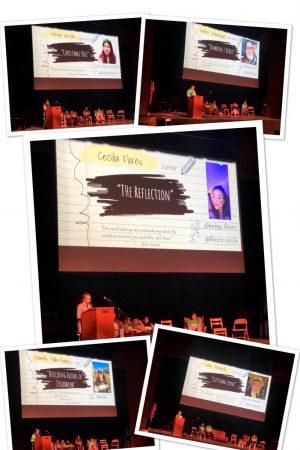Women in STEM: The Struggle for Equality
October 22, 2014
Over the past couple of years, Leyden has done a great job of keeping up with technology and adding STEM (Science, Technology, Engineering, and Mathematics) based classes to our curriculum. Leyden has done an even better job including women in this change.
According to Forbes, nationwide, women represent only 24% of the STEM workforce and the percentage of men working with a STEM job with some college, Associates degree, Bachelor’s degree, or Masters degree is triple or quadruple that of women with the same degree. With companies looking to hire anyone who knows how to code, engineer, etc., it’s important that high schools get, and keep, young women in STEM courses.
Leyden offers such courses: TSI(Technology Support Internship), Car Care, Networking, yet girls remain somewhat scarce as far as enrollment is concerned. Cindy De Soto is currently involved in TSI, Computer Science AP, Networking 1 and 2. She is also involved in the Computer Club. De Soto’s TSI class actually has the most girls out of all of the TSI classes, which is three. She also has two, including herself, in her Networking class and has five in her Computer Science class.
But despite what may seem like low numbers, Leyden does a fantastic job keeping those girls who have shown interest in technology. One method the district uses is allowing teens to meet successful women that are in STEM and make networking connections for the future. Just a few weeks ago, Leyden held an “All Things Computer Science,” where six women working in technology spoke to 50 girls about their careers in STEM and why young girls should strive to get into technology fields.
The district has also launched a club for girls interested in STEM: the Tech gURLS Club. Club sponsor and Leyden business education teacher, Ms. Amy Gorzynski, explained that the purpose of the club is “to expose girls to what options are out there in the field of technology and provide opportunities and experiences to learn more about it.” She added that the club came to life as a result of a strong need for a higher female tech workforce. According to the statistics, 85% of purchasing decisions are influenced by women, but women are responsible for only 10% of the production of market goods. Also, men outnumber women in the technology field on a 4:1 ratio. The club meets about one to two times every month, and all girls, even those not currently enrolled, are encouraged to join.
These efforts seem to be working as students like De Soto have already developed enough confidence not to feel uncomfortable with the imbalance. She said that she believes that the person with the better credentials and who can get the job done best and most efficiently, regardless of gender, is the one who has the edge in the job market. De Soto is looking into computer forensics as her future career because the matter of solving crimes intrigues her.
Another STEM student, Miriam Hernandez, is in classes such as TSI and Networking which are also very male-heavy, but the males in her classes make her feel welcome and treat her as a peer. Hernandez first decided to take Networking after she went to work with her dad for the first time. Her dad is a contractor for RNC, a cable company in Chicago, and one day he asked her to connect the WiFi. This struck an interest in her, and she began looking into technology classes at Leyden. Since then, Hernandez has learned how to make ethernet cords, how to set up desktops, tv’s, etc–right alongside her male counterparts.
Hernandez is looking to pursue a career as a Computer Security Analyst. She is looking to go to Trition for her first two years of schooling and then transfer to Dominican University to study Computer Science. She understands that there are more men in the field, but she would love to see a major change with the amount of women working in STEM industries. STEM jobs have been increasingly available over the past decade and don’t look like they will be stopping anytime soon. The US Department of Commerce found that women working in STEM made ⅓ more than women in non-STEM related jobs.
After exploring the field at Leyden, Hernandez said she understands that “there is an expectation for women to rise up and be equal to the amount of men working.”
http://www.womenspeak.com/women-wanted-stem-jobs-add-13-more-to-income/








